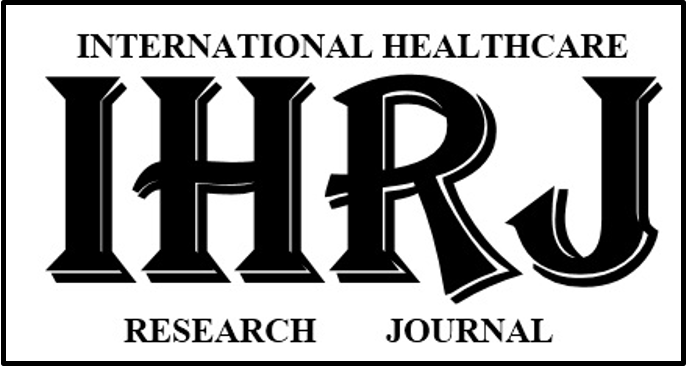Associating Use of Digital Technology and Self-Reported Health Problems among College Going Students in Delhi-NCR, India
Abstract
INTRODUCTION: The increased use of digital media among college students has the tendency to cause various health problems based on the duration and medium used.
AIM: To assess the use of digital technology and self- reported health problems among college going students in Delhi-NCR, India
MATERIALS AND METHODS: Data was collected using a pre-tested and pre-validated questionnaire which was divided into three sections. The first section contained seven questions regarding demographic details, the second contained three questions regarding the device used, hours spent and the type of media assessed, while the third contained twelve questions regarding self-reported adverse events while accessing digital media. Statistical tests involved the Shapiro-Wilk test, Independent samples t-test, multivariate linear regression and the Pearson’s correlation coefficient. The analysis was done using SPSS version 19.0.
RESULTS: Responses of 717 students were included in the final analysis. Most of the students were between 17-19 years (53.9%), the primary device used was smartphone (91.8%). Most students used their device for >1-4 hours (34.6%). The most common self-reported symptom was back and/or neck pain (18.4%) followed by sleep issues/ insomnia (17.7%) and headache (17.3). Multiple linear regression model revealed that good knowledge scores were significantly associated with age(p = 0.04) and the duration of device used (p = 0.02). A positive, linear, great strength of association (r: +0.747) and a significant relationship (p = 0.037) was found between self-reported health problems and the hours of device usage.
CONCLUSION: It is advised that college students be advised regarding the ill effects of digital medium without taking proper precautions.
Downloads
References
Farley T. Mobile Telephone History. Telektronikk 3/4; 2005. Available from: http://www.privateline.com/wp-content/uploads/2016/01/TelenorPage_022-034.pdf. [Last Accessed on 15th January, 2020]
Ifinedo, P. Applying uses and gratifications theory and social influence processes to understand students’ pervasive adoption of social networking sites: Perspectives from the Americas. International Journal of Information Management 2016;36:192-206.
Bekalu MA, McCloud RF, Viswanath K. Association of Social Media Use With Social Well-Being, Positive Mental Health, and Self-Rated Health: Disentangling Routine Use From Emotional Connection to Use. Health Education & Behavior 2019;46(2S):69S– 80S. https://doi.org/10.1177/1090198119863768
Hall JA, Kearney MW, Xing C. Two tests of social displacement through social media use. Information, Communication & Society 2018;22(10):1396-413. https://doi.org/10.1080/1369118X.2018.1430162
Subrahmanyam K, Reich SM, Waechter N, Espinoza G. Online and offline social networks: Use of social networking sites by emerging adults. Journal of Applied Developmental Psychology 2008;29:420-33. https://doi.org/10.1016/j.appdev.2008.07.003
George DR, Rovniak LS, Kraschnewski JL. Dangers and opportunities for social media in medicine. Clin Obstet Gynecol. 2013;56(3):453–62.
Jadhav HC, Dodamani AS, Deokar RN, Bhandari RC, Khobragade VR, Agrawal AS. Patterns of Mobile Phone use and Self-reported Health Problems among Adults Visiting a Private Dental Institute. Int J Sci Stud 2020;8(1):1-5.
IBM Corp. Released 2010. IBM SPSS Statistics for Windows, Version 19.0. Armonk, NY: IBM Corp.
Dol KS. Fatigue and pain related to internet usage among university students. J Phys Ther Sci. 2016; 28(4): 1233–7. https://doi.org/10.1589/jpts.28.1233
Waersted M, Hanvold TN, Veiersted KB: Computer work and musculoskeletal disorders of the neck and upper extremity: a systematic review. BMC Musculoskelet Disord, 2010, 11: 79.
Madeleine P, Vangsgaard S, Hviid Andersen J, et al. : Computer work and self-reported variables on anthropometrics, computer usage, work ability, productivity, pain, and physical activity. BMC Musculoskelet Disord. 2013, 14: 226.
Anderson KJ. Internet Use Among College Students: An Exploratory Study. Journal of American College Health 2001;50(1):21-6. https://doi.org/10.1080/07448480109595707
Perry TT, Perry LA, Hosack-Curlin, K. Internet use by university students: an interdisciplinary study on three campuses. Internet Research 1998:8(2):136-141. https://doi.org/10.1108/10662249810211593
Wang Q, Chen W, Liang Y. The Effects of Social Media on College Students. 2011.MBA Student Scholarship. 5. (Online Article). Available from: https://scholarsarchive.jwu.edu/mba_student/5 [Last Accessed on 12th January, 2020]
Sponcil M, Gitimu P. Use of social media by college students: Relationship to communication and self-concept. Journal of Technology Research 2013;4:1-13.

Copyright (c) 2020 Sheetal Bawnoo Handoo et al.

This work is licensed under a Creative Commons Attribution-NonCommercial 4.0 International License.


